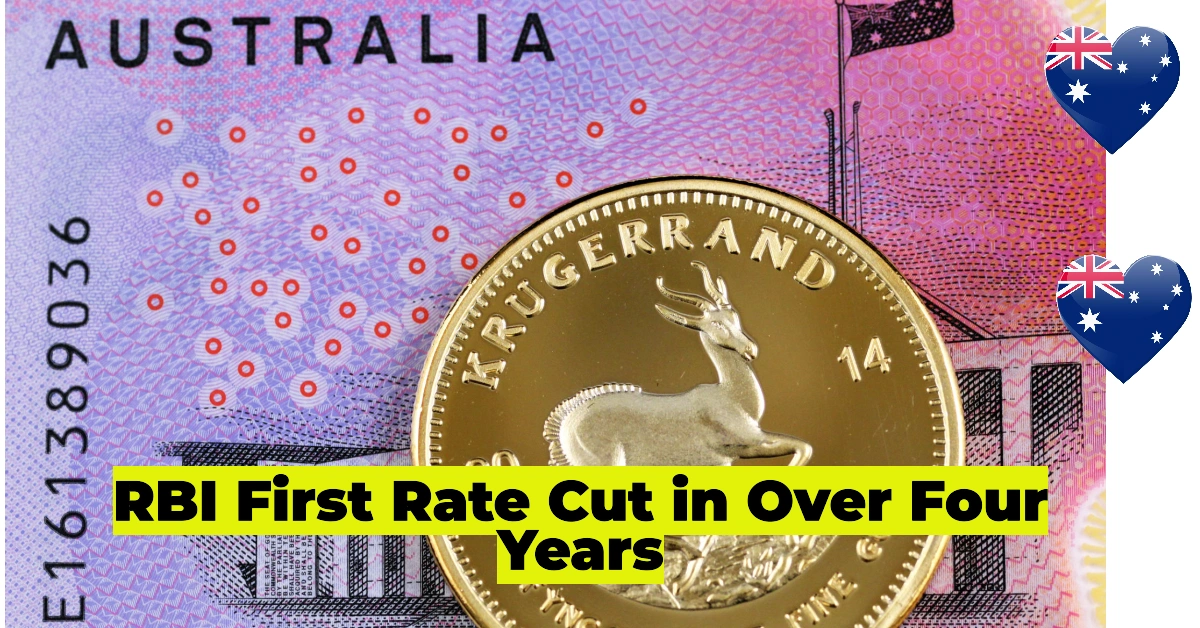In a long-anticipated move, the Reserve Bank of Australia (RBA) has cut interest rates for the first time since November 2020, joining other major global central banks in easing monetary policy. On Tuesday, the RBA reduced its benchmark rate by 25 basis points to 4.10%, marking a significant shift after a prolonged period of rate hikes to curb inflation.
Table of Contents
While the rate cut acknowledges progress in reducing inflation, the RBA remains cautious about future policy moves, signaling that any further easing will be gradual and measured.
Hawkish Tone Despite Rate Cut—Analysts Predict Short-Lived Easing Cycle
Although markets had widely anticipated the rate cut, analysts noted the RBA’s hawkish stance, suggesting that aggressive monetary easing is unlikely. Abhijit Surya, senior APAC economist at Capital Economics, predicted that the RBA’s easing cycle would be short-lived, forecasting only two rate cuts in total, with a terminal cash rate of 3.60%.
The central bank had previously held its policy rate steady at 4.35% since November 2023, following an aggressive tightening cycle of 13 consecutive rate hikes to combat inflationary pressures.
Aussie retirees may face higher taxes under these Circumstances in 2025
Australians Set to Earn More and Keep More with Labor’s Expanded Tax Cuts in 2025
ATO Unveils Real-Time Fraud Detection to Combat $557 Million Tax Scam Epidemic
Simplifying Superannuation: Radical Tax Reforms Could Save $1 Billion Annually
Inflation Trends and Economic Signals Pave the Way for Policy Shift
The RBA’s decision to cut rates comes as inflationary pressures ease faster than expected. According to the Australian Bureau of Statistics, inflation over the 12 months through the December quarter fell to 2.4%, down from 2.8% in the September quarter.
With the RBA’s target range for inflation set between 2% and 3%, policymakers are gaining confidence that inflation is sustainably trending towards its desired range.
Labor Market Strength Keeps Monetary Policy in Check
One of the key factors influencing the RBA’s cautious approach to further rate cuts is Australia’s resilient labor market. The unemployment rate remained near historic lows at 4.0% in December, with recent data suggesting stronger-than-expected job market conditions.
The RBA acknowledged that the labor market may be tighter than previously thought, posing a potential obstacle to aggressive rate cuts in the near term.
Economic Growth Remains Sluggish as Australia Faces Uncertainties
Despite easing inflation, economic growth remains weak, adding pressure on policymakers to stimulate demand. Australia’s seasonally adjusted GDP grew by just 0.3% in the September quarter, while annual growth slowed to 0.8%—its lowest rate since the pandemic.
The RBA expressed concerns about uncertainties in the domestic economy, particularly in household consumption. While the central bank expects spending to pick up as incomes rise, there is a risk that consumer activity remains sluggish, which could slow overall economic recovery.
Market Reaction: Australian Dollar Strengthens, ASX 200 Slides
Following the RBA’s decision, the Australian dollar edged higher to 0.6341 against the U.S. dollar, reflecting market confidence in the central bank’s cautious approach. Meanwhile, the ASX 200 index extended losses, declining by 0.54%, as investors reacted to the central bank’s tempered outlook for future rate cuts.
Political Implications: Rate Cut a Boon for Labor Government Ahead of Elections
The timing of the rate cut could provide a political boost for Australia’s Labor government, which faces a challenging election year amid sluggish economic growth. Lower borrowing costs could ease financial pressures on households and businesses, potentially improving economic sentiment ahead of the vote.
Final Thoughts: A Delicate Balancing Act for the RBA
While the RBA’s first rate cut in over four years signals a turning point in monetary policy, its hawkish messaging suggests a cautious path ahead. With economic growth struggling to gain momentum and inflation cooling, the central bank must carefully navigate risks to ensure that rate cuts provide the necessary support—without triggering unintended consequences.
As the global economy continues to shift, all eyes will remain on the RBA’s next moves in 2024—will further rate cuts follow, or will economic uncertainties keep policy tightening on the table?


2 thoughts on “Australia’s Central Bank Delivers First Rate Cut in Over Four Years—But Warns of Economic Uncertainties”